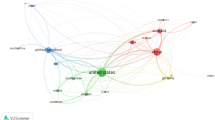Abstract
Most of the existing stress assessment frameworks rely on physiological signals measurements (EEG, ECG, GSR, ST, etc.), which involve direct physical contact with the patient in a medical setup. Present technologies rely on capturing moods and emotions through remote devices (cameras), further processed by computer vision and machine learning techniques. The proposed work describes a method of automatic stress classification where stress information is modeled based on pupil diameter non-intrusive measurements, recorded by an eye tracking remote system. The signal extracted from the pupil Dataset has been processed using the Bag-Of-Words model, with a SVM classification and results have been compared to similar experiments in order to validate the applicability and consistency of the Bag-Of-Words model on stress assessment and classification.
Access this chapter
Tax calculation will be finalised at checkout
Purchases are for personal use only
Similar content being viewed by others
References
Pedrotti, M., Mirzaei, M.A., Tedesco, A., Chardonnet, J., Mérienne, F., Benedetto, S., Baccino, T.: Automatic stress classification with pupil diameter analysis. Int. J. Hum.-Comput. Interact. 30, 1–17 (2014)
Sharma, N., Dhall, A., Gedeon, T., Goecke, R.: Modeling stress using thermal facial patterns: a spatio-temporal approach. In: Proceedings of Humaine Association Conference on Affective Computing and Intelligent Interaction, pp. 387–392 (2013)
Hart, S., Staveland, L.: Development of NASA-TLX (task load index): results of empirical and theoretical research. Adv. Psychol. 52, 39–183 (1988)
Chen, S., Epps, J.: Automatic classification of eye activity for cognitive load measurement with emotion interference. Comput. Methods Programs Biomed. 110(2), 111–124 (2013)
Giakoumis, D., Drosou, A., Cipresso, P., Tzovaras, D., Hassapis, G., Gaggioli, A., Riva, G.: Using activity-related behavioural features towards more effective automatic stress detection. PLoS One 7(9) (2012)
Neerincx, M.A., Kraaij, W.: The SWELL knowledge work dataset for stress and user modeling research categories and subject descriptors. In: Proceedings of the 16th International Conference on Multimodal Interaction, pp. 291–298 (2014)
Bartels, M., Marshall, S.: Measuring cognitive workload across different eye tracking hardware platforms. In: Proceedings of the Symposium on Eye Tracking Research and Applications, pp. 161–164 (2012)
Hossain, G., Yeasin, M.: Understanding effects of cognitive load from pupillary responses using Hilbert analytic phase. In: IEEE Conferences on Computer Vision and Pattern Recognition Workshops, pp. 375–380 (2014)
Hussain, S., Chen, S., Calvo, A.R., Chen, F.: Classification of cognitive load from task performance & multichannel physiology during affective changes. In: Conference on Multimodal Interaction, pp. 1–4 (2011)
Paschero, M., Del Vescovo, G., Benucci, L., Rizzi, A., Santello, M., Fabbri, G., Mascioli, F.M.F.: A real time classifier for emotion and stress recognition in a vehicle driver. In: IEEE International Symposium on Industrial Electronics, pp. 1690–1695 (2012)
Ordonez, P., Armstrong, T., Oates, T., Fackler, J.: Using modified multivariate bag-of-words models to classify physiological data. In: IEEE 11th International Conference on Data Mining Workshops, pp. 534–539 (2011)
Wang, J., Liu, P., She, M.F.H., Nahavandi, S., Kouzani, A.: Bag-of-words representation for biomedical time series classification. Biomed. Signal Process. Control 8(6), 634–644 (2013)
Merino, L.M., Meng, J., Gordon, S., Lance, B.J., Johnson, T., Paul, V., Tank, U.S.A.: A bag-of-words model for task-load prediction from EEG in complex environments. In: IEEE International Conference on Acoustics, Speech and Signal Processing, pp. 1227–1231 (2013)
Foggia, P., Percannella, G., Saggese, A., Vento, M.: Recognizing human actions by a bag of visual words. IEEE Int. Conference on Syst. Man Cybern. 2910–2915 (2013)
Zhang, Y., Jin, R., Zhou, Z.H.: Understanding bag-of-words model: a statistical framework. Int. J. Mach. Learn. Cybern. 1(1–4), 43–52 (2010)
Koike, A., Takagi, T.: Classifying biomedical figures using combination of bag of keypoints and bag of words. In: Proceedings of the International Conference on Complex, Intelligent and Software Intensive Systems, pp. 848–853 (2009)
Koelstra, S., Muhl, C., Soleymani, M., Lee, J.S., Yazdani, A., Ebrahimi, T., Pun, T., Nijholt, A., Patras, I.: DEAP: a database for emotion analysis; using physiological signals. IEEE Trans. Affect. Comput. 3(1), 18–31 (2012)
Soleymani, M., Lichtenauer, J., Pun, T., Pantic, M.: A multimodal database for affect recognition and implicit tagging. IEEE Trans. Affect. Comput. 3(1), 42–55 (2012)
Acknowledgments
The present work has been conducted under the 29667 Internal Grant 2014–2015, in the Technical University of Cluj-Napoca, Romania.
Author information
Authors and Affiliations
Corresponding author
Editor information
Editors and Affiliations
Rights and permissions
Copyright information
© 2016 Springer International Publishing Switzerland
About this paper
Cite this paper
Ciupe, A., Florea, C., Orza, B., Vlaicu, A., Petrovan, B. (2016). A Bag of Words Model for Improving Automatic Stress Classification. In: Abraham, A., Wegrzyn-Wolska, K., Hassanien, A., Snasel, V., Alimi, A. (eds) Proceedings of the Second International Afro-European Conference for Industrial Advancement AECIA 2015. Advances in Intelligent Systems and Computing, vol 427. Springer, Cham. https://doi.org/10.1007/978-3-319-29504-6_33
Download citation
DOI: https://doi.org/10.1007/978-3-319-29504-6_33
Published:
Publisher Name: Springer, Cham
Print ISBN: 978-3-319-29503-9
Online ISBN: 978-3-319-29504-6
eBook Packages: EngineeringEngineering (R0)




